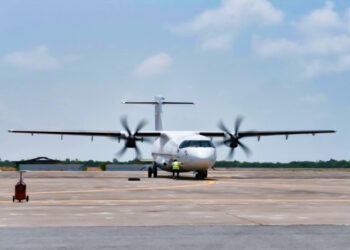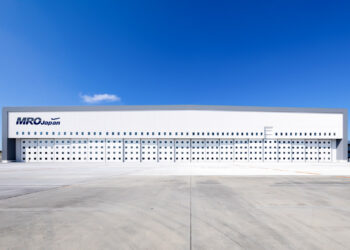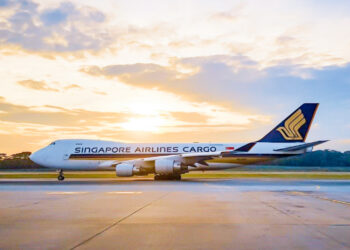No products in the cart.
The distribution of widebody freighters
Last month Cargo Facts presented a detailed analysis of the widebody freighter fleets of airlines worldwide. That analysis showed that 75 airlines (down from 79 a year ago and 85 the year before that) currently operate 1,002 widebody freighters (up from 995), and that 150 (down from 164) more widebody production freighters are on order.
Today we begin a two-part look at the way those 1,002 widebody freighters are operated and how the different types of widebody freighters are distributed within the fleet — by type, by manufacturer, by operator type and by geographical region.
Air freight demand increased 3.8% in 2015. Not particularly impressive by historical standards, although better than most recent years. With only three good years since 2007, the air freight industry has gone through nine years with very little net growth. Not surprisingly, this situation has had a negative impact on the demand for freighters. So too has the rapidly increasing belly capacity offered by cargo-friendly widebody passenger aircraft like the A330, A350, 777 and 787, and, until last year, so did rising fuel prices. At the end of 2007, the widebody freighter fleet stood at 1,005 units. Since that time, other than a brief spike when carriers returned many parked freighters to temporary service following a surge in air freight demand in 2010, the total gradually fell to 958 at the beginning of 2014. With 4.5% demand growth in 2014, followed by the modest 2.2% in 2015 and 3.8% last year, carriers have adjusted the rate of retirement of older freighters to almost match the rate of delivery of new ones. Since we looked at it at this time last year, the fleet is up by just 7 units (0.7%), and still below its pre-recession high point of 1,005.
However, while the number of widebody freighters in the fleet rose slightly, the order backlog shrank. At this time last year, Airbus and Boeing had a combined 164 production freighters on firm order. Now that number is 150, an 8.5% decrease. This was not unexpected, as the total at the beginning of 2016 was inflated by FedEx’s decision to order another fifty 767-300Fs in 2015. With no such major order in the last twelve months, and deliveries continuing apace, the backlog has fallen.
 Comparing the current fleet to the fleet at this time last year on a model-by-model basis shows substantial increases for all of the current production freighter types: 767-300Fs up 11 to 121 (a 10% increase), A330-200Fs up 3 to 36 (9%), 777Fs up 10 to 129 (8%) and 747-8Fs up 6 to 69 (10%).
Comparing the current fleet to the fleet at this time last year on a model-by-model basis shows substantial increases for all of the current production freighter types: 767-300Fs up 11 to 121 (a 10% increase), A330-200Fs up 3 to 36 (9%), 777Fs up 10 to 129 (8%) and 747-8Fs up 6 to 69 (10%).
In addition to these 30 new production freighters, the resurgence in demand for medium widebody freighters, particularly by Amazon, brought 16 P-to-F conversions into the fleet, including eleven 767-300BDSFs, three 767-300BCFs and two A300-600Fs.
Of course, there were retirements, too. As might be expected, carriers dropped many older types: 747 Classics (down 7), MD-11Fs (down 6), DC/MD-10Fs (down 5), 767-200Fs (down 2), A310Fs (down 2), and A300B4Fs (down 1).
But it wasn’t just the older types that disappeared from the fleet – there was also a 16-unit drop-off in the number of 747-400 freighters. This included the parking of three 747-400ERFs, six -400Fs, three -400BCFs, and four -400BDSFs.
In all, the 46 additions and 39 retirements left the fleet up a total of seven units over this time last year.
The number of narrowbody freighters in service worldwide, which had been contracting for several years, began to increase in 2013 and continued to increase in 2014 and 2015, but the majority of freighters now flying are still widebodies. Today just over 60% of the jet freighter fleet is comprised of widebody units, down slightly from last year, but up significantly from just a 50% widebody share as recently as 2005. With demand having slowed for widebodies in recent years while increasing for narrowbodies, we expect a slow, but steady, continuing decrease in the percentage of widebodies in the coming years.
New-build widebody freighters will continue to enter the fleet over the next few years, but the current backlog of 150 orders is well down from the 203 units on order just four years ago, and Cargo Facts does not see any major resurgence in demand, particularly for the large widebody types. One can easily make a case for an increase in demand for medium widebodies, as express operators add capacity to keep up with the explosion of e-commerce, but how much of that demand will be met with production freighters remains to be seen.
FedEx ordered 112 767-300Fs from Boeing, but with 75 of those still to come, another big order seems unlikely. DHL, which operates fewer aircraft of its own than FedEx and UPS, has never shown much of an appetite for production freighters, and that seems unlikely to change. DHL did place an order last year for four freighter-converted A330-300s with EFW, and, barring some unexpected hitch in the development of the conversion program or the performance of the aircraft, will likely order more – but not on the scale of FedEx’s 767 order.
Which leaves UPS. Late last year, UPS placed an order for fourteen 747-8Fs, and is unlikely to order any more of that type. Its medium widebody fleet includes fifty-nine 767-300Fs and fifty-two A300-600Fs, but these are all relatively young (average age about 13 years), so, while an order to bring in some additional capacity is possible, a major refleeting order is unlikely in the near-to-medium term. UPS does have thirty-seven aging MD-11Fs which it may consider replacing in the coming years, so a 777F order would not be surprising. But, it would not be on the scale of FedEx’s orders.
However, there is a wild card in play: If Amazon expands its fleet to fill the space available at its newly announced hub at Cincinnati/Northern Kentucky Airport (CVG), demand for medium widebody conversions could skyrocket. Cargo Facts expects that Amazon will expand its fleet, and while some of that expansion will be with narrowbody freighters, some will also be with more freighter-converted 767s.
Those interested in learning more about the current makeup and future growth of the widebody freighter fleet should join us at Cargo Facts Asia in Shanghai, April 25-26, where the subject will be explored from many viewpoints. For more information, or to register, go to CargoFactsAsia.com.




